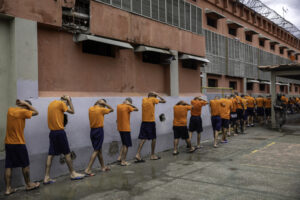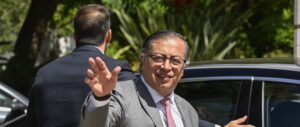Across the hemisphere, we have recently seen violent clashes between protesters and militarized police forces. Tipping point events—such as the clashes in Brazil in the summer of 2013 and in Ferguson, Missouri last month—have provoked public outrage and calls for “de-militarization” of police forces. While the outrage is sometimes too fleeting to compel change, the events make the public and the media aware of conditions that affected populations have known for decades. While the roots of police militarization in Brazil differ from those in Ferguson and other U.S. cities, the consequences are the same.
In June 2013 Brazil saw countrywide demonstrations protesting a lack of basic services while the country was spending billions on the World Cup and the Olympics. The unprepared and overreacting police forces responded in a way that shocked the largely middle-class protesters. The police, using “non-lethal” weapons like pepper spray and rubber bullets while dressed from head to toe in ninja-like full battle gear, indiscriminately arrested both violent “black bloc” demonstrators, known for their confrontational tactics and anarchist views, along with non-violent protestors marching peacefully. Middle class protesters came to know what low-income populations living in favelas (squatter settlements) in Brazil’s largest cities experience routinely.
Calls for de-militarization of the police—from social movements, non-governmental organizations, and even segments of the police itself—became widespread and remain one of the legacies of the World Cup.
Protests in Ferguson and similarly militarized reactions from the police have also called into question the militarization of U.S. municipal police forces. And, as in Brazil, the broader public suddenly became conscious of police practices that communities of color throughout the country have experienced regularly.
The historical roots of militarized police in both countries differ significantly. During the military regime in Brazil (1964-1985), the Military Police were auxiliary to the Armed Forces and were an important vehicle for the repressive State. The democratic constitution of 1988 changed virtually all aspects of government but left the police institutions unchanged. There have been advances in law enforcement in Brazil, including certain political openings for rights-respecting policies at the state and federal level, and important civil society initiatives like the Brazilian Forum for Public Safety. But deep-seated obstacles remain, and the Military Police today, while not officially a wing of the Armed Forces, remains an institution with a strict military hierarchy, training that retains a military ideology, and practices that frequently resemble occupying forces conquering enemy territories.
The public outcry in Ferguson, and eventually throughout the United States, over the police shooting of black teenager Michael Brown shed light on the federal policy since 9/11 of arming local police agencies with military-style equipment. With $34 billion available in federal grants from the Department of Homeland Security since 9/11 and with the rationale of protecting against potential terrorist activity, local police departments have bought or been granted military grade equipment totally inappropriate to the needs of local law enforcement. No less important, the public outcry shed light on racist police practices of largely white police forces against minority communities in cities throughout the country. Cries of “we are Ferguson” from cities across the U.S. referred to both the racist practices and misconduct of the police as well as to its outsized and militarized response.
The outcry over Ferguson resonated in Brazil. Cries of “Ferguson is here every day” was the response of Brazilian researchers and community activists referring to the even more frequent human rights violations by Brazilian police dealing with low-income communities.
The parallels do not stop there. The specter of 9/11 hangs over both countries. While surplus military equipment became the public face of protests in Ferguson, U.S. military and paramilitary training was an integral part of Brazil’s public safety preparations for the World Cup. In March of this year, 22 Brazilians from the Military and Federal Police went to the North Carolina headquarters of Academi, formerly known as the infamous Blackwater, for a three-week training course paid for by the U.S. government, apparently with Defense Department funding. According to a São Paulo Police official, the training was intended “to learn the practical experiences of the American troops fighting terrorism.” Additionally, with training specifically focused on “civil disturbances,” more than 800 Brazilian police from nine states participated in training by the FBI in the states of Rio de Janeiro, São Paulo, Ceará, and Brasília. While the Brazilian Police claim they respect the right to protest peacefully, they clearly were not able to distinguish between peaceful and violent protesters.
But the parallels do stop here. In response to the public outcry and the demands by civil rights activists, African-American communities, and others, the U.S. Department of Justice announced it would launch a three-year, five-city project consisting of training, analysis of data on stops, searches and arrests, with implications for all U.S. cities, and a re-thinking of weapons transfers to local police. Many U.S. local police departments are now requiring all police to use body cameras to record interactions with citizens. While many U.S. activists would like to see further actions, the U.S. response contrasts sharply with that of Brazil. In Brazil, where constitutional restraints formally limit the federal government’s intervention for purposes of external oversight, public discussions of reforming and demilitarizing the police are currently stymied as candidates for president and state governors jockey for support in the October elections. It is an opportune but unlikely moment for significant change.


